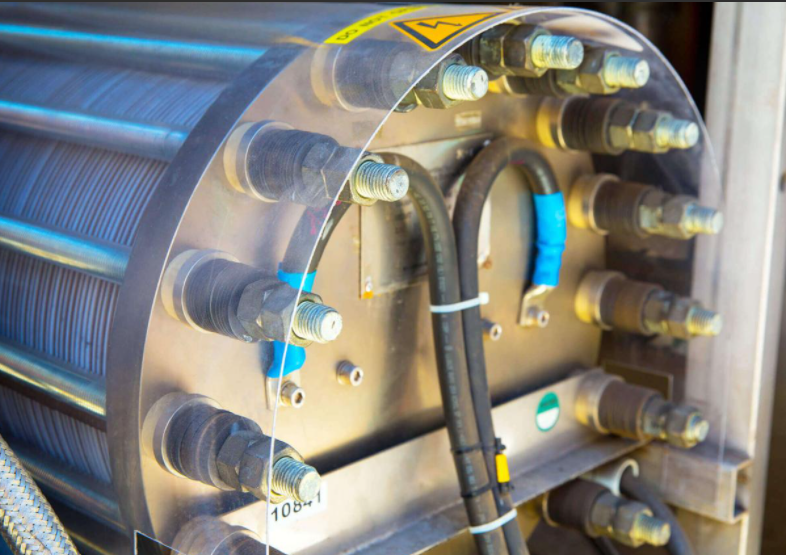Green hydrogen: A strategic approach

The green hydrogen market, once poised for rapid progress and high expectations, has recently struggled to see projects make it all the way through final investment decisions. However, this should not be mistaken for stagnation. Instead, it signifies the industry's maturation as it becomes more deliberate and selective in its approach. Despite perceptions of a slowdown, the sector remains dynamic and crucial, continuing to evolve in terms of regulation and policy, and playing a significant role in the global push for sustainability. Businesses focused on sustainability and decarbonisation should closely follow developments in the green hydrogen market. Companies need to continue to be selective and focused on integrating green hydrogen into their overall plans, assessing how hydrogen can support their decarbonisation ambitions and how they, as corporate players, can support the development of the hydrogen value chain from production to offtake. Green hydrogen presents both challenges and opportunities that can influence strategic direction and impact sustainability efforts, and should therefore be viewed as one of many levers in a comprehensive decarbonisation strategy, not as a one-size-fits-all solution.
Hydrogen Adoption Challenges
Despite the enthusiasm surrounding hydrogen, its adoption faces several formidable challenges. Availability remains limited, and the infrastructure and supply chains required to produce and distribute green hydrogen are still developing, due to three main factors:
Green hydrogen costs have not been decreasing as quickly as expected, complicating the expected level of adoption by offtakers.
Without stable, long-term demand, projects have a difficult business case for investment, slowing progress or leading to avoidance.
There is a general expectation around the necessity to have more regulatory and policy interventions — on both the supply side (e.g. subsidies) and the demand side (e.g. quotas) — in order to relaunch project implementation and the overall momentum.
However, there are still opportunities for overcoming these challenges and gradually integrating green hydrogen in relevant ways.
Value Chain Opportunities for Hydrogen Adoption
To maximise green hydrogen's potential, companies should collaborate on projects that integrate the entire value chain from H2 production to final use. This approach includes several strategic opportunities:
Complex Products with Embedded Green Hydrogen: Companies can focus on products with embedded Green Hydrogen like fertilisers and green steel, where the green premium of hydrogen is a smaller share of the final product price, increasing the willingness to pay. For example, the premium of a car using hydrogen-based green steel is lower as a percentage compared to the premium of green hydrogen alone versus grey hydrogen.
Engaging with Offtakers for Insetting Initiatives: Businesses should work with offtakers motivated by their Scope 3 agenda to support green hydrogen development. Insetting, where companies invest in decarbonisation projects within their own value chain, can significantly enhance a business’s green hydrogen strategy. A food and beverage company investing in a green hydrogen project intended to produce green fertiliser for farmers, for example, would contribute to decarbonising their own value chain. These insetting initiatives drive demand and contribute to broader Scope 3 goals.
Identifying Hydrogen Hub Opportunities: Establishing hydrogen hubs with localised supply and demand can reduce transportation and infrastructure costs. These hubs can serve as incubator of competitive green H2 projects and pave the way for scale up.
The Future of Green Hydrogen Despite the market slowdown, the hydrogen industry is not abandoning its potential but is instead undergoing a necessary rationalisation. It's crucial not to let recent short-term overhype lead to medium-term underhype. The green hydrogen market is emerging yet turbulent, characterised by ongoing regulatory and policy changes and a rapid pace of evolution. Companies must stay informed about policy and regulatory developments, adopting strategic, forward-thinking approaches to integrate hydrogen into their sustainability plans. Partnerships and integrated projects are vital, with offtakers needing to explore innovative engagement methods, such as insetting, to drive cost-competitive developments and secure the green hydrogen necessary for meeting decarbonisation targets. Green hydrogen remains pivotal in the transition to a low-carbon future, demanding even stronger collaboration, innovation, and sustained effort from both industry and government.
1.The news above mentioned with detailed source are from internet.We are trying our best to assure they are accurate ,timely and safe so as to let bearing users and sellers read more related info.However, it doesn't mean we agree with any point of view referred in above contents and we are not responsible for the authenticity. If you want to publish the news,please note the source and you will be legally responsible for the news published.
2.All news edited and translated by us are specially noted the source"CBCC".
3.For investors,please be cautious for all news.We don't bear any damage brought by late and inaccurate news.
4.If the news we published involves copyright of yours,just let us know.
BRIEF INTRODUCTION
Cnbearing is the No.1 bearing inquiry system and information service in China, dedicated to helping all bearing users and sellers throughout the world.
Cnbearing is supported by China National Bearing Industry Association, whose operation online is charged by China Bearing Unisun Tech. Co., Ltd.
China Bearing Unisun Tech. Co., Ltd owns all the rights. Since 2000, over 3,000 companies have been registered and enjoyed the company' s complete skillful service, which ranking many aspects in bearing industry at home and abroad with the most authority practical devices in China.




